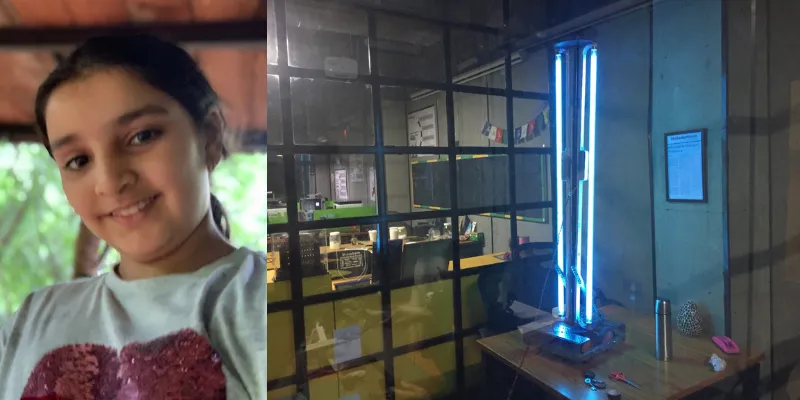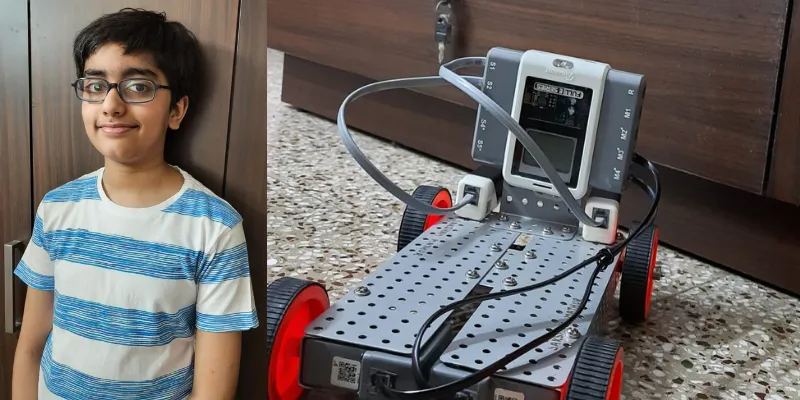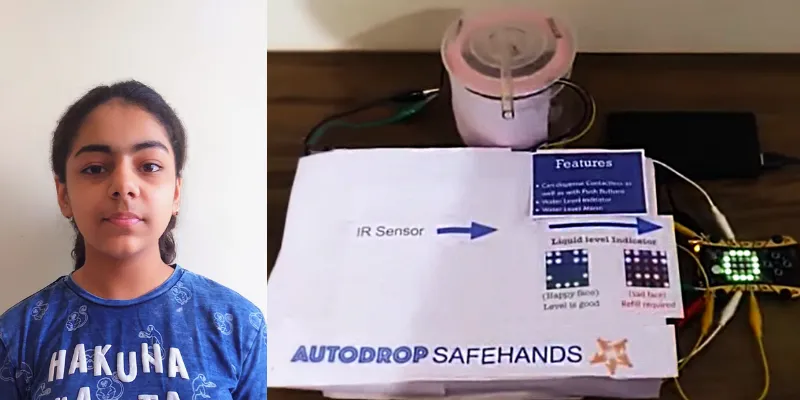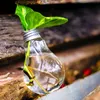From a sanitising system to a smart dustbin, how these children are using innovation to combat COVID-19
SocialStory shares the stories of a few children in Delhi who have been discovering new devices — from air sanitisers to quarantine helpers.
With the onset of the coronavirus pandemic in 2020, many schools and offices had to shut to curb the spread of the virus and prevent the rising cases of infections. This led to many students having a lot of time on their hands after their classes, and some of them have found a way to put that time to good use.
Many children have been creating unique inventions such as UV sanitisers and disinfecting sprays to combat the pandemic by enhancing safety measures and implementing social distancing norms.
SocialStory spoke to some of these children to understand their scientific temper and their mind-blowing innovations that can go the distance to combat the virus.
Nandini Bhalla – UV Rakshak

Nandini Bhalla and the UV Rakshak
While the pandemic has induced so much fear that people are even afraid of breathing the air around them, Nandini Bhalla, 13, has built a sanitising system to disinfect the air.
“What we need is a system that can kill the virus not only on surfaces but also in the air. I designed the UV Rakshak to inactivate the virus in the air, and this could be done from a distance remotely. The system can be used to kill the virus at crowded locations like hospitals, schools, bus stations, airports etc,” Nandini Bhalla tells SocialStory.
To provide an ability to operate a UV-C radiation emitter remotely, Nandini used a bunch of high torque motors, Arduino mega, and developed an app to launch UV Rakshak.
“The first few versions were made out of Avishkaar kits and then we got the actual fabrication done. Since my father is an innovator at Avishkaar, we were able to easily source all the parts,” says Nandini.
The system is currently employed at two hospitals, but Nandini also wants to use it in her school when it reopens.
Saksham Mathur – Quarantine Helper

Saksham Mathur and his Quarantine Helper
In April, 12-year-old Saksham Mathur’s sister tested positive for COVID-19, and after that, his father fell ill as well. At this point, he wanted to ensure that he was able to reach them safely with food and also ensure that his mother and grandmother were safe. So, he built a robot called the ‘Quarantine Helper’ which helps deliver food and medicines from a distance of 7 feet.
“The robot has a base made from Avishkaar robotic kit, with two IR sensors. It has been programmed in such a way that the caregiver places the food on the tray and places the hand in front of the IR sensor, which makes the robot move forward by 7 feet,” Saksham explains
"The patient picks up the food and places the hand in front of the second sensor without actually touching the robot to make the robot come back to the caretaker,” he adds.
It was used extensively by Saksham’s family for sending snacks, drinks and medicines to the patients. He also envisions its usage at restaurants, hospitals in the long run, with suitable variations.
Kiyansh Kashyap – Rakshak

Kiyansh Kashyap's Rakshak
Delhi-based Kiyansh Kashyap, 11, came up with not only a unique contactless dustbin, but also a robot that can help COVID-19 patients from a distance. What started as a smart dustbin now also serves medication, water and all essential items to the patients, which was then aptly named ‘Rakshak’.
“It works remotely with the help of an AMS app. I have also attached a smartphone to it. The family can talk to the patients. It can be remotely accessed by the other devices running the host application,” says Kiyansh.
Rakshak played saviour when Kiyansh’s father was down with COVID-19. It helped the family by giving the patient the medicine, essential food items, among others, from a safe distance.
“After the practical application, I found that it should have some more features so that it can completely help the patient. So, I have also added a smart hand sanitiser dispenser, and automatic water dispenser,” Kiyansh tells SocialStory.
For the road ahead, Kiyansh wants to add some more features which can help the health sectors. The doctors and health workers are working overtime because of COVID-19 and Kiyansh wants to contribute by upgrading Rakshak with some AI features that will enable it to work as a nurse.
Navya Mongia – Autodrop Safehands

Navya Mongia's Autodrop Safehands
This 13-year-old from Delhi put together a contactless dispensing machine that can dispense both sanitisers and soap. Navya Mongia’s ‘Autodrop Safehands’ not only helps decrease the spread of the coronavirus but also acts as a reminder to keep the hands clean and sanitised at all times.
“It can be used to dispense liquid by simply placing the hand under the nozzle of the dispenser, and also using the push buttons on the markerboard. Using the IR sensor connected to the pump, the machine dispenses the liquid. When the IR sensor senses a hand, it sends a message to the pump to turn on,” Navya shares.
“When pressed, the pump is signalled to turn on, and it dispenses liquid. The markerboard has also been programmed in a manner that it buzzes in case the liquid level is lower than specified,” she adds.
The machine is extensively used by Navya’s family to sanitise all the products that are delivered to them.
The teenager has also made three more dispensers which she wants to install in her school once it resumes. Based on the experience and the response, she wants to pitch the idea to the management of other schools.
Edited by Kanishk Singh









